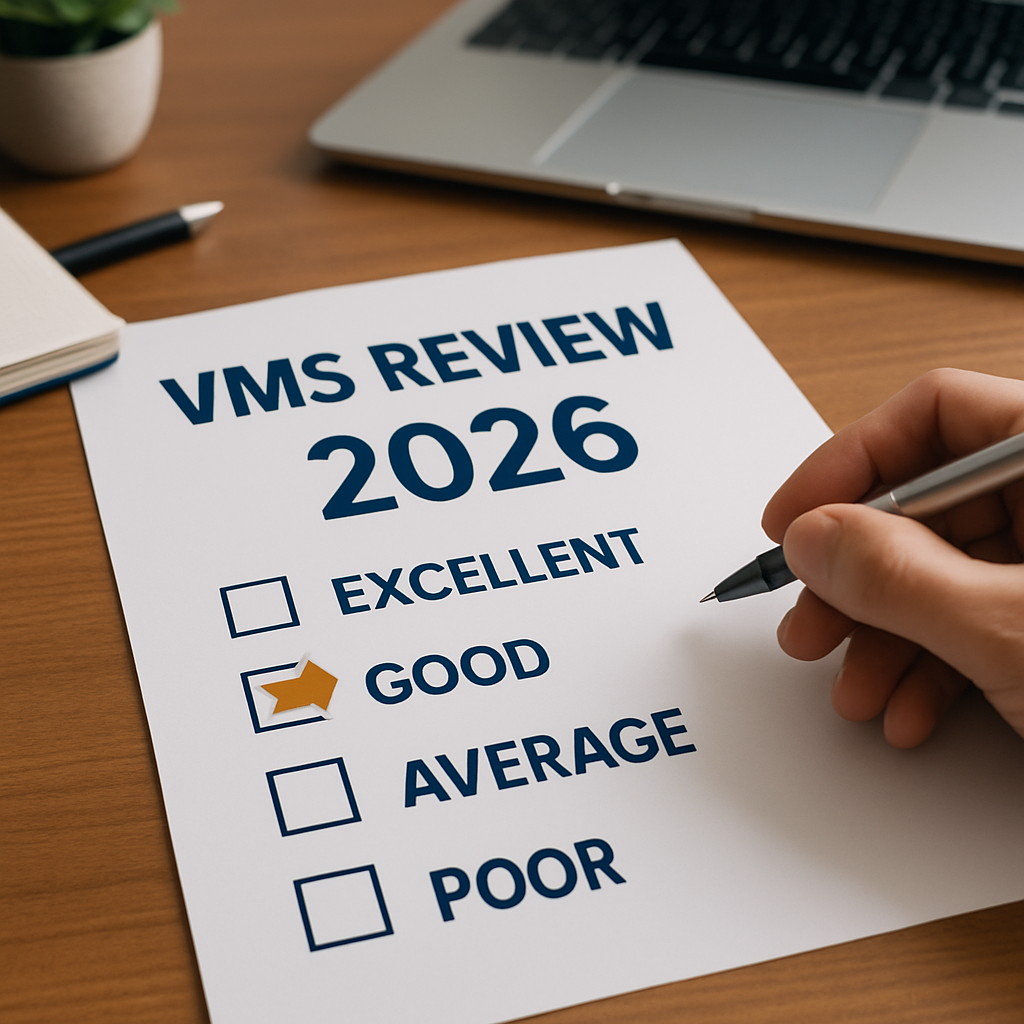An increasing number of employers now recognize the significance of achieving visibility and control over their contingent workforce. When executed effectively, businesses can enhance workforce quality, acquire talent more swiftly, and cut costs. To achieve this, many are adopting Vendor Management Software to more effectively oversee, manage, and assess the staffing agencies they employ to source these workers.
In this article, we will take a look at what a Vendor Management System is, and what are the "Bells & Whistles" functionality that you actually need.
What is a vendor management system?
A VMS system is a platform that acts as a system of record for your entire staffing agency process. A vendor management system automates and centralizes all staffing vendor processes from hiring and onboarding workers, tracking payments, measuring staffing agency performance and so much more.
As a result of using a vendor management system, your organization gains complete visibility and control over its staffing agencies and externally-sourced workforce.
These insights improve your future contingent workforce decision-making, ensuring that you access top-quality workers to meet your workforce goals, save money, improve internal processes, and speed up the time-to-hire process.
What are the features of a VMS?
According to an article from Staffing Industry Analysts (SIA), the functionality of the typical vendor management system can be broken down into three basic categories:
#1 - Traditional Contingent Process Management
- Requisitioning / sourcing
- Assignment management
- Contract creation
- Onboarding
- Extensions
- Rate changes
- Offboarding
- Time and expenses
- Invoicing and payment
#2 - SOW Process Management
- RFI/RFP
- Bidding
- Agreement creation / management / close-out
- Assignment management
- Onboarding
- Offboarding
- Payment requests, time and expenses
- Invoicing
#3 - Additional Features
- Reporting
- Tactical
- Strategic
- Market intelligence
- Freelancer / independent contractor management
- Integrations
- Client systems
- Supplier systems
- Mobile applications
- Language and other localizations
- Infrastructure
- Supplier management
- Supplier registration
- Evaluations
Many VMS providers have features that you’ll never use
In the software world, there is a common issue known as “feature creep”. Shopify defines feature creep as:
“When you add excessive features to a product that make it too complicated or difficult to use. Any additional features that you introduce into your product add to the complexity of your design. In turn, this can diminish the usability of your product.”
Feature creep occurs when extra features are added to a product. These features go beyond the basic function of the product, resulting in the design of a product becoming a feature-led experience rather than a user-centric one.
While these features are useful for some companies, they aren’t for most. Instead, having bells and whistles that you never use can lead to a frustrating experience that reduces the ROI your business realizes from using the product.
This is particularly true when it comes to vendor management systems.
Many of the Legacy VMS systems are complex. They have more functionalities than most clients will ever need, let alone the businesses which only have smaller or mid-size contingent workforce budgets.
As a result of these complex functionalities, implementation takes longer, ease-of-use is dramatically reduced and businesses that don’t need these features simply waste time and money navigating a technology solution that’s way too powerful for their requirements.
What are the VMS features you actually need?
The six key functionalities you need to manage your contingent workforce and staffing agencies include:
- Worker hiring and onboarding
- The consolidation of staffing agencies into one centralized platform
- The automation of vendor management processes
- Time and Expense Management Invoicing
- Vendor guidelines so all hiring managers are following standardized rules
- Scalability, so your tech can grow with the demands of your business
Need Help Choosing the Right VMS?
Whether you are in the market for a new VMS Solution, or just getting started, we are here to help. Download a free copy of our 2024 VMS Buyers Guide to help you choose the right VMS for your organization. This helpful guide includes a checklist of questions to ask VMS providers when you are making your selection.
About Conexis VMS
Conexis VMS stands out as a user-friendly and budget-friendly vendor management system (VMS) that leverages cutting-edge technology and prioritizing user experience. By streamlining and automating the procure-to-pay process for contingent non-employee contractors and their supplying vendors. Conexis enhances transparency, efficiency, compliance, and cost-saving opportunities throughout the organization via comprehensive reporting and analytics.
See Conexis VMS In Action!
See how easy Conexis is to use by taking a quick 2 minute Self-Guided Tour. Contact Us for a Free No-Obligation Consultation to discuss your workforce challenges (and get immediate actionable insights) or Book a Personal Demo Today!
Learn More about Managing Staffing Agencies with a VMS:
➡️ How to Manage Staffing Agencies: Your Complete Guide➡️ 5 Reasons to Use Staffing Agencies: & How to Manage Them Effectively with a VMS➡️ VMS: The Simplest Way to Manage Your Staffing Agencies➡️ Managing Staffing Agencies: To Tender or Not to Tender➡️ Managing Staffing Agencies: Your Guide to Performance Management & KPIs➡️ Staffing Agency Bill Rate: What is it?➡️ Best Practices: Managing Staffing Agencies for your Contingent Workforce➡️ Using VMS Software to Track Staffing Agency Performance➡️ 5 Dangers of using Manual Spreadsheets to Manage Staffing Vendors➡️ How to Choose a Staffing Agency for You Company's Contingent Workforce Needs➡️ VMS Technology: Why Manual Spreadsheets are Not Effective






